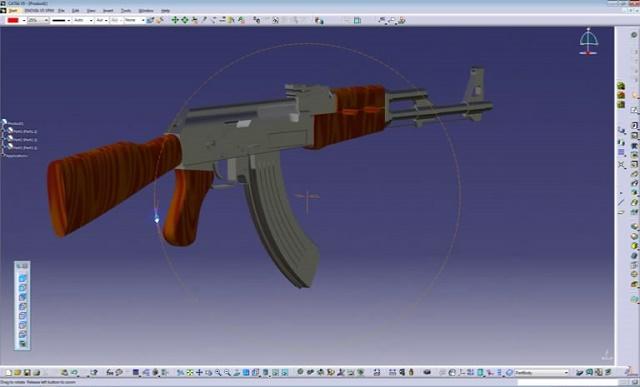اختصاصی از
فی ژوو SMART GRID Fundamentals of Design and Analysis, IEEE/Wiley, 2012 کتاب دانلود با لینک مستقیم و پر سرعت .


SMART GRID Fundamentals of Design and Analysis, IEEE/Wiley,
2012
مطالب
1 SMART GRID ARCHITECTURAL DESIGNS 1
1.1 Introduction 1
1.2 Today’s Grid versus the Smart Grid 2
1.3 Energy Independence and Security Act of 2007: Rationale
for the Smart Grid 2
1.4 Computational Intelligence 4
1.5 Power System Enhancement 5
1.6 Communication and Standards 5
1.7 Environment and Economics 5
1.8 Outline of the Book 5
1.9 General View of the Smart Grid Market Drivers 6
1.10 Stakeholder Roles and Function 6
1.10.1 Utilities 9
1.10.2 Government Laboratory Demonstration Activities 9
1.10.3 Power Systems Engineering Research Center (PSERC) 10
1.10.4 Research Institutes 10
1.10.5 Technology Companies, Vendors, and Manufacturers 10
1.11 Working Defi nition of the Smart Grid Based on Performance
Measures 11
1.12 Representative Architecture 12
1.13 Functions of Smart Grid Components 12
1.13.1 Smart Devices Interface Component 13
1.13.2 Storage Component 13
1.13.3 Transmission Subsystem Component 14
1.13.4 Monitoring and Control Technology Component 14
1.13.5 Intelligent Grid Distribution Subsystem Component 14
1.13.6 Demand Side Management Component 14
1.14 Summary 15
References 15
Suggested Readings 15
2 SMART GRID COMMUNICATIONS AND MEASUREMENT
TECHNOLOGY 16
2.1 Communication and Measurement 16
2.2 Monitoring, PMU, Smart Meters, and Measurements
Technologies 19
2.2.1 Wide Area Monitoring Systems (WAMS) 20
2.2.2 Phasor Measurement Units (PMU) 20
2.2.3 Smart Meters 21
2.2.4 Smart Appliances 22
2.2.5 Advanced Metering Infrastructure (AMI) 22
2.3 GIS and Google Mapping Tools 23
2.4 Multiagent Systems (MAS) Technology 24
2.4.1 Multiagent Systems for Smart Grid Implementation 25
2.4.2 Multiagent Specifi cations 25
2.4.3 Multiagent Technique 26
2.5 Microgrid and Smart Grid Comparison 27
2.6 Summary 27
References 27
3 PERFORMANCE ANALYSIS TOOLS FOR SMART GRID DESIGN 29
3.1 Introduction to Load Flow Studies 29
3.2 Challenges to Load Flow in Smart Grid and Weaknesses of the
Present Load Flow Methods 30
3.3 Load Flow State of the Art: Classical, Extended Formulations,
and Algorithms 31
3.3.1 Gauss–Seidal Method 31
3.3.2 Newton–Raphson Method 32
3.3.3 Fast Decouple Method 33
3.3.4 Distribution Load Flow Methods 33
3.4 Congestion Management Effect 37
3.5 Load Flow for Smart Grid Design 38
3.5.1 Cases for the Development of Stochastic Dynamic
Optimal Power Flow (DSOPF) 41
3.6 DSOPF Application to the Smart Grid 41
3.7 Static Security Assessment (SSA) and Contingencies 43
3.8 Contingencies and Their Classifi cation 44
3.8.1 Steady-State Contingency Analysis 46
3.8.2 Performance Indices 47
3.8.3 Sensitivity-Based Approaches 48
3.9 Contingency Studies for the Smart Grid 48
3.10 Summary 49
References 50
Suggested Readings 50
4 STABILITY ANALYSIS TOOLS FOR SMART GRID 51
4.1 Introduction to Stability 51
4.2 Strengths and Weaknesses of Existing Voltage Stability Analysis
Tools 51
4.3 Voltage Stability Assessment 56
4.3.1 Voltage Stability and Voltage Collapse 57
4.3.2 Classifi cation of Voltage Stability 58
4.3.3 Static Stability (Type I Instability) 59
4.3.4 Dynamic Stability (Type II Instability) 59
4.3.5 Analysis Techniques for Dynamic Voltage Stability
Studies 60
4.4 Voltage Stability Assessment Techniques 62
4.5 Voltage Stability Indexing 65
4.6 Analysis Techniques for Steady-State Voltage Stability Studies 68
4.6.1 Direct Methods for Detecting Voltage Collapse Points 69
4.6.2 Indirect Methods (Continuation Methods) 69
4.7 Application and Implementation Plan of Voltage Stability 70
4.8 Optimizing Stability Constraint through Preventive Control of
Voltage Stability 71
4.9 Angle Stability Assessment 73
4.9.1 Transient Stability 75
4.9.2 Stability Application to a Practical Power System 76
4.9.3 Boundary of the Region of Stability 77
4.9.4 Algorithm to Find the Controlling UEP 80
4.9.5 Process Changes in Design of DSA for the Smart Grid 80
4.10 State Estimation 81
4.10.1 Mathematical Formulations for Weighted Least
Square Estimation 84
4.10.2 Detection and Identifi cation of Bad Data 86
4.10.3 Pre-Estimation Analysis 86
4.10.4 Postestimation Analysis 88
4.10.5 Robust State Estimation 90
4.10.6 SE for the Smart Grid Environment 94
4.10.7 Real-Time Network Modeling 95
4.10.8 Approach of the Smart Grid to State Estimation 95
4.10.9 Dynamic State Estimation 97
4.10.10 Summary 98
References 98
Suggested Readings 98
5 COMPUTATIONAL TOOLS FOR SMART GRID DESIGN 100
5.1 Introduction to Computational Tools 100
5.2 Decision Support Tools (DS) 101
5.2.1 Analytical Hierarchical Programming (AHP) 102
5.3 Optimization Techniques 103
5.4 Classical Optimization Method 103
5.4.1 Linear Programming 103
5.4.2 Nonlinear Programming 105
5.4.3 Integer Programming 106
5.4.4 Dynamic Programming 107
5.4.5 Stochastic Programming and Chance Constrained
Programming (CCP) 107
5.5 Heuristic Optimization 108
5.5.1 Artifi cial Neural Networks (ANN) 109
5.5.2 Expert Systems (ES) 111
5.6 Evolutionary Computational Techniques 112
5.6.1 Genetic Algorithm (GA) 112
5.6.2 Particle Swarm Optimization (PSO) 113
5.6.3 Ant Colony Optimization 113
5.7 Adaptive Dynamic Programming Techniques 115
5.8 Pareto Methods 117
5.9 Hybridizing Optimization Techniques and Applications to the
Smart Grid 118
5.10 Computational Challenges 118
5.11 Summary 119
References 120
6 PATHWAY FOR DESIGNING SMART GRID 122
6.1 Introduction to Smart Grid Pathway Design 122
6.2 Barriers and Solutions to Smart Grid Development 122
6.3 Solution Pathways for Designing Smart Grid Using Advanced
Optimization and Control Techniques for Selection Functions 125
6.4 General Level Automation 125
6.4.1 Reliability 125
6.4.2 Stability 127
6.4.3 Economic Dispatch 127
6.4.4 Unit Commitment 128
6.4.5 Security Analysis 130
6.5 Bulk Power Systems Automation of the Smart Grid
at Transmission Level 130
6.5.1 Fault and Stability Diagnosis 131
6.5.2 Reactive Power Control 132
6.6 Distribution System Automation Requirement of the Power Grid 132
6.6.1 Voltage/VAr Control 132
6.6.2 Power Quality 135
6.6.3 Network Reconfi guration 136
6.6.4 Demand-Side Management 136
6.6.5 Distribution Generation Control 137
6.7 End User/Appliance Level of the Smart Grid 137
6.8 Applications for Adaptive Control and Optimization 137
6.9 Summary 138
References 138
Suggested Reading 139
7 RENEWABLE ENERGY AND STORAGE 140
7.1 Renewable Energy Resources 140
7.2 Sustainable Energy Options for the Smart Grid 141
7.2.1 Solar Energy 141
7.2.2 Solar Power Technology 142
7.2.3 Modeling PV Systems 142
7.2.4 Wind Turbine Systems 144
7.2.5 Biomass-Bioenergy 145
7.2.6 Small and Micro Hydropower 147
7.2.7 Fuel Cell 147
7.2.8 Geothermal Heat Pumps 148
7.3 Penetration and Variability Issues Associated with Sustainable
Energy Technology 148
7.4 Demand Response Issues 150
7.5 Electric Vehicles and Plug-in Hybrids 151
7.6 PHEV Technology 151
7.6.1 Impact of PHEV on the Grid 151
7.7 Environmental Implications 152
7.7.1 Climate Change 153
7.7.2 Implications of Climate Change 153
7.8 Storage Technologies 154
7.9 Tax Credits 158
7.10 Summary 159
References 159
Suggested Reading 159
8 INTEROPERABILITY, STANDARDS, AND CYBER SECURITY 160
8.1 Introduction 160
8.2 Interoperability 161
8.2.1 State-of-the-Art-Interoperability 161
8.2.2 Benefi ts and Challenges of Interoperability 161
8.2.3 Model for Interoperability in the Smart Grid
Environment 162
8.2.4 Smart Grid Network Interoperability 162
8.2.5 Interoperability and Control of the Power Grid 163
8.3 Standards 163
8.3.1 Approach to Smart Grid Interoperability Standards 163
8.4 Smart Grid Cyber Security 166
8.4.1 Cyber Security State of the Art 166
8.4.2 Cyber Security Risks 169
8.4.3 Cyber Security Concerns Associated with AMI 171
8.4.4 Mitigation Approach to Cyber Security Risks 171
8.5 Cyber Security and Possible Operation for Improving
Methodology for Other Users 173
8.6 Summary 174
References 174
Suggested Readings 174
9 RESEARCH, EDUCATION, AND TRAINING FOR THE SMART
GRID 176
9.1 Introduction 176
9.2 Research Areas for Smart Grid Development 176
9.3 Research Activities in the Smart Grid 178
9.4 Multidisciplinary Research Activities 178
9.5 Smart Grid Education 179
9.5.1 Module 1: Introduction 180
9.5.2 Module 2: Architecture 180
9.5.3 Module 3: Functions 181
9.5.4 Module 4: Tools and Techniques 181
9.5.5 Module 5: Pathways to Design 181
9.5.6 Module 6: Renewable Energy Technologies 181
9.5.7 Module 7: Communication Technologies 182
9.5.8 Module 8: Standards, Interoperability, and Cyber
Security 182
9.5.9 Module 9: Case Studies and Testbeds 182
9.6 Training and Professional Development 182
9.7 Summary 183
References 183
10 CASE STUDIES AND TESTBEDS FOR THE SMART GRID 184
10.1 Introduction 184
10.2 Demonstration Projects 184
10.3 Advanced Metering 185
10.4 Microgrid with Renewable Energy 185
10.5 Power System Unit Commitment (UC) Problem 186
10.6 ADP for Optimal Network Reconfi guration in Distribution
Automation 191
10.7 Case Study of RER Integration 196
10.7.1 Description of Smart Grid Activity 196
10.7.2 Approach for Smart Grid Application 196
10.8 Testbeds and Benchmark Systems 197
10.9 Challenges of Smart Transmission 198
10.10 Benefi ts of Smart Transmission 198
10.11 Summary 198
References 199
11 EPILOGUE 200
Index 203
دانلود با لینک مستقیم
SMART GRID Fundamentals of Design and Analysis, IEEE/Wiley, 2012 کتاب 

_Page_2.jpg)
_Page_3.jpg)










